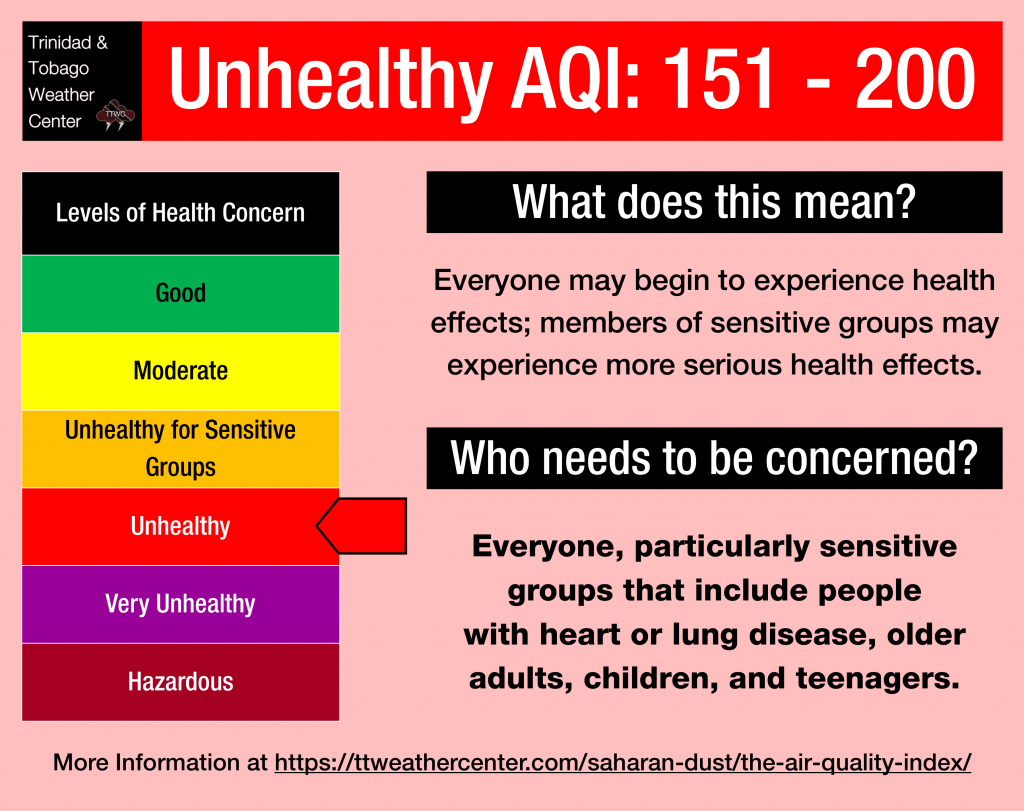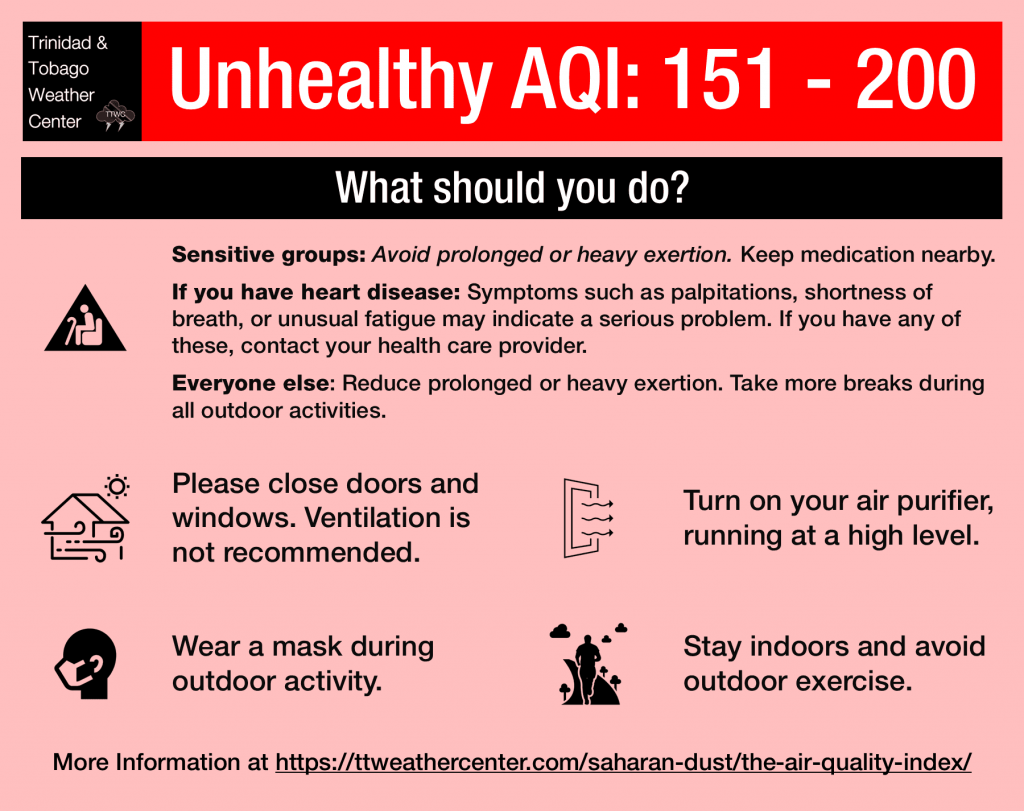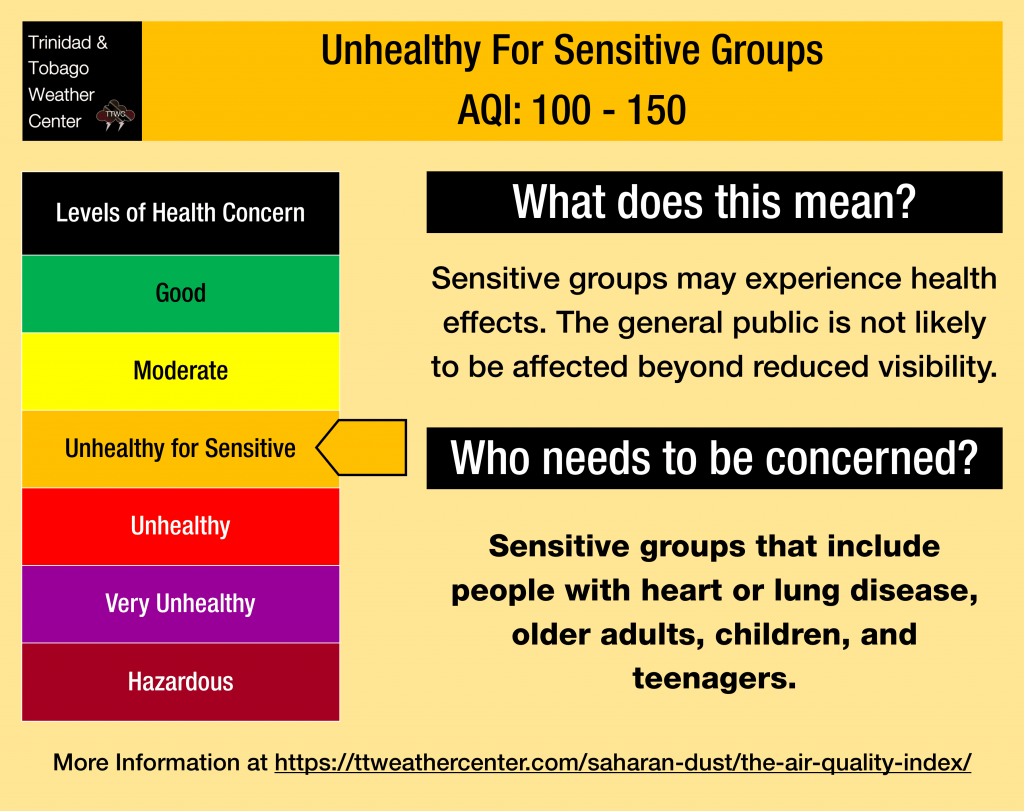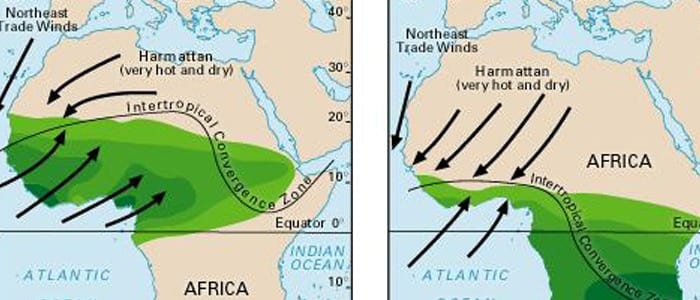As forecast, a major surge of Saharan Dust has moved across Trinidad and Tobago and the remainder of the Windward Islands, significantly reducing air quality and visibility across the region.
While there are no official alerts, watches, or warnings in effect for Trinidad and Tobago, Barbados is currently under an orange-level Significant Dust Haze Advisory through noon on February 1st.
However, improvement is forecast from late Thursday but forecast models show elevated concentrations remaining across the region through the next ten days.
What you need to know
— Saharan Dust Surges: A significant Saharan Dust concentration surge is forecast to continue moving across Trinidad and Tobago, spreading across the Lesser Antilles with decreasing concentrations from February 2nd. Elevated dust levels are forecast to remain across the region through the next ten days.
— Impacts: Through February 1st, air quality across T&T will range between moderate and unhealthy. From February 2nd, air quality will remain mostly at moderate levels, occasionally reducing to levels that are unhealthy for sensitive groups.
— What Should You Do: Particularly through February 1st, everyone should take the necessary precautions. Thereafter, unusually sensitive groups are advised to take the necessary precautions, particularly during high traffic and in the vicinity of fires.
Current AQI Levels Across T&T

The official air quality monitoring stations from the Environmental Management Agency (EMA) at Mayaro, Beetham, Port of Spain, San Fernando, and Point Lisas are all reporting unhealthy air quality levels. As of Thursday morning, the stations at Signal Hill, Tobago and Arima are not reporting PM2.5 or PM10 data.
These measurements are based on PM2.5 (particulates the size of 2.5 micrometers and smaller, usually associated with increases in Saharan Dust, vehicle exhaust, and smoke) and PM10 particulates.
Over the last 24 hours, visibility has been severely affected by Saharan Dust at the A.N.R. Robinson International Airport at Crown Point, Tobago, where visibility dipped to six kilometers and particularly at the Piarco International Airport, Trinidad, where visibility has fluctuated between three and four kilometers.
Saharan Dust Forecast

A major surge of Saharan Dust that was well forecast is continuing to move across the Windwards and Trinidad and Tobago, with peak concentrations ongoing as of Thursday morning. Concentrations are forecast to gradually decrease over the next 24-48 hours, with air quality still near unhealthy to unhealthy for sensitive groups.
Concentrations will gradually decline over the next ten days, but another moderate surge is forecast to move in by February 7th into February 8th.
Through February 1st, air quality across T&T will range between moderate and unhealthy. From February 2nd, air quality will remain mostly at moderate levels, occasionally reducing to levels that are unhealthy for sensitive groups. Air quality may be further reduced near bush or landfill fires or during high-traffic periods. As drier conditions are forecast, there will be an increased risk of fires.
What does this mean for you?


Everyone may begin to experience health effects, and members of sensitive groups may experience more serious health effects. Everyone should take the necessary precautions, particularly through February 1st, when peak concentrations are forecast.


From February 2nd, air quality is forecast to gradually improve across Trinidad and Tobago as higher concentrations of Saharan Dust move westward. However, with elevated concentrations still present and drier conditions bringing the risk of fires, air quality is still forecast to be reduced, with further reductions in localized areas of fires, blowing smoke and dust, and high traffic.


During this period, a ridge of high pressure stays over the central Sahara Desert, and the Intertropical Convergence Zone (ITCZ) remains over the Gulf of Guinea. The Harmattan wind accelerates when it blows across the mountain massifs of Northwest Africa. If its speed is high enough and it blows over dust source regions, it lifts the dust and disperses it.
The surges of dust during this time of year are due to the Harmattan, a season in the West African subcontinent that occurs between the end of November and the middle of March. During this season, a predominant northeasterly trade wind (dubbed the Harmattan Winds) blows from the Sahara Desert over Western Africa into the Gulf of Guinea.

Dust that makes it into the upper levels of the atmosphere can then get transported across the Atlantic Ocean and affect the Eastern Caribbean. These Saharan Dust outbreaks tend to be milder in the Eastern Caribbean than the dust outbreaks.











